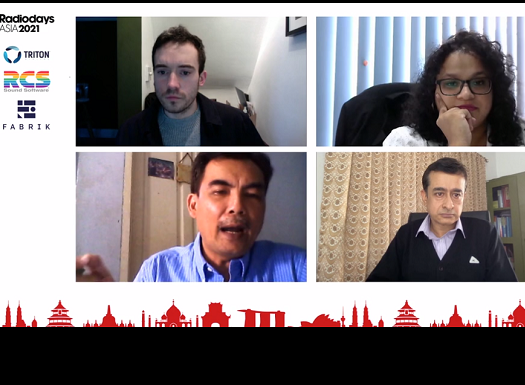Kristian Porter of Public Media Alliance, UK, moderated a session called ‘Talking Covid: The personal experience’ featuring Daulat Pane Section Head, Voice of Indonesia, RRI, Indonesia, Shehara Liyanage, Programme Manager, YESFM, Sri Lanka, and Suman Basnet Asia-Pacific Regional Director of the World Association of Community Radio Broadcasters AMARC, Nepal.
He discussed how has Covid affected the way stations work and how they engage with audiences?
Speaking about the biggest challenge during the pandemic, Daulat said practising social distancing measures and learning from home through the internet was difficult for many students, so RRI launched a program called ‘Learning through RRI’ where they could learn through the radio. Following this, an ‘inspiration class’ was introduced where professionals were invited to share their story of how they achieved their dream of becoming what they wanted to be. “In July, some broadcasters, including me, were confirmed Covid positive, and the station in Jakarta was locked down. Broadcasters could not come to office, so all content was produced from home, which was very challenging,” he said.
Shehera, whose network runs five stations, got presenters to do the morning shows from their homes. They faced problems with the youth, whose school life was disrupted; there was an increase in domestic violence, many people needed help to get through tough times. So they tweaked their programmes to educate listeners about practising good hygiene and staying positive.
Suman said a big challenge for community radios in Nepal was internet connectivity, because of their remote locations; staff were not able to come to stations and another problem was finances. When the economy of the market dried up, so did the finances for community radios.
Kristen also discussed if this situation helped the stations adapt to Covid. Daulat mentioned a small community radio near Delhi which serves the local population, especially migrants, and the pressure from them to listen to the station was so strong that the local government had to intervene in a positive way and transported the station personnel to and from the station safely. It really showed the value of a local broadcaster.
Shehera said they wanted to engage with more people so they did a lot activities specific to children and parents, initiatives to debunk disinformation and invented on-air games to help people practice covid protocols like not touching their face.
When Kristian asked if there are any adaptations and innovations they would like to keep once the pandemic is over, Suman said: “There has to be a synergy between public broadcasters, commercial broadcasters and community radio to harness their resources, audience and local reach. The idea of decentralised production and radio broadcasting is changing radio already, and for local communities, especially in Asia, this is a challenge because of connectivity issues.”
Subscribe to the radioinfo podcast on these platforms: Acast, Apple iTunes Podcasts, Podtail, Spotify, Google Podcasts, TuneIn, or wherever you get your podcasts.


